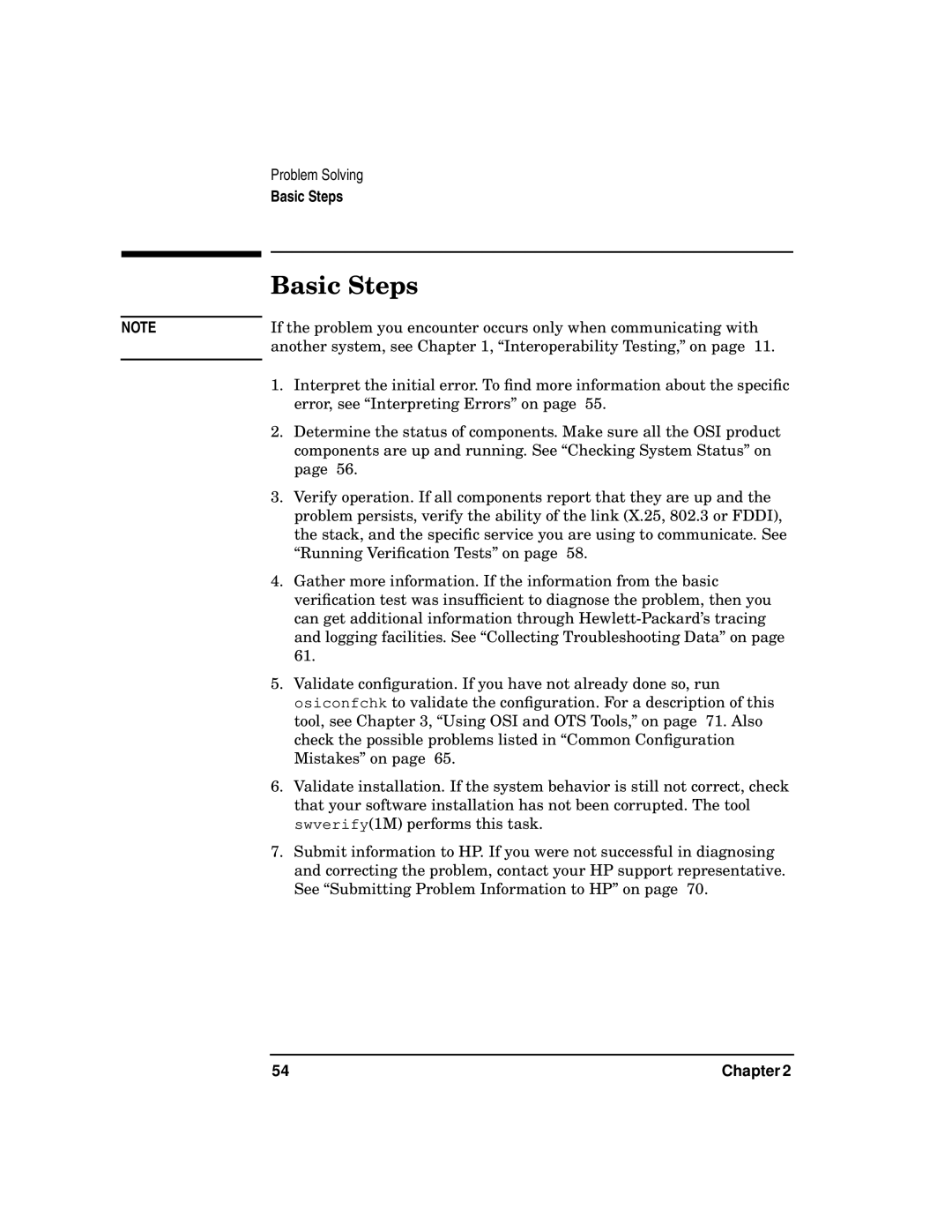
NOTE
Problem Solving
Basic Steps
Basic Steps
If the problem you encounter occurs only when communicating with another system, see Chapter 1, “Interoperability Testing,” on page 11.
1.Interpret the initial error. To find more information about the specific error, see “Interpreting Errors” on page 55.
2.Determine the status of components. Make sure all the OSI product components are up and running. See “Checking System Status” on page 56.
3.Verify operation. If all components report that they are up and the problem persists, verify the ability of the link (X.25, 802.3 or FDDI), the stack, and the specific service you are using to communicate. See “Running Verification Tests” on page 58.
4.Gather more information. If the information from the basic verification test was insufficient to diagnose the problem, then you can get additional information through
5.Validate configuration. If you have not already done so, run osiconfchk to validate the configuration. For a description of this tool, see Chapter 3, “Using OSI and OTS Tools,” on page 71. Also check the possible problems listed in “Common Configuration Mistakes” on page 65.
6.Validate installation. If the system behavior is still not correct, check that your software installation has not been corrupted. The tool swverify(1M) performs this task.
7.Submit information to HP. If you were not successful in diagnosing and correcting the problem, contact your HP support representative. See “Submitting Problem Information to HP” on page 70.
54 | Chapter 2 |
